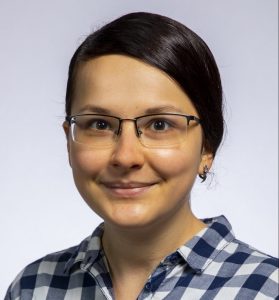
April 13, 2022
Detecting formation and growth of refugee / displaced person camps in the Ukraine crisis: Assisting first-phase humanitarian response using satellite imagery
Amid the worst population displacement crisis in Europe since World War 2, governments and international organizations have struggled with the massive task of tracking and providing aid to Ukrainian refugees and internally displaced persons (IDPs). This presentation reviews requirements and explores solutions for AI-assisted monitoring of formation of ad-hoc refugee encampments and temporary/informal settlements in remotely-sensed imagery to support time-critical humanitarian operations. Data and models for binary geospatial prediction of camp location as well as time-series camp expansion will be discussed, as will deep methods for characterizing similarities and differences among detected encampments.

April 13, 2022
A Computational Respiration Factor to Detect Abnormal Respiratory Patterns Using a Hydraulic Bed Sensor for Older Adults Aging-in-place
Hydraulic bed sensors are efficient non-wearable, passive sensors for unobtrusive and continuous collection of health data for older adults aging-in-place. Continuous collection of data can speak volumes about onset and development of a disease much before it is diagnosed and that is our vision through this work. Hydraulic bed sensor data yields signal from which three major physiological components can be extracted for sleeping individuals, the ballistocardiogram component, the respiration component, and the bed restlessness component. In this work, we focus on the respiration component to detect any abnormal patterns in respiration, more specifically related to Chronic Obstructive Pulmonary Disorder…

March 16, 2022
Development of AI Models for Remote Sensing City Fitness
Tracking a city’s fitness is particularly important for the continued urbanization of civilization. Urban environmental and air quality and overall fitness are decreasing due to natural and anthropogenic events, causing degradation of living quality and leading to various population health issues, including heart and lung problems and even premature death. City fitness monitoring is mostly dependent on ground sensor deployment. However, this ground sensor-based monitoring is often not continuous and extensive due to the lack of resources and a very low number of ground observations. Another approach is to estimate city fitness parameters using models built with remote sensing (RS)…

March 16, 2022
Tool development for resolving and visualizing irregular heartbeats measured by cardiac magnetic resonance
Atrial fibrillation (AFib) is the most common irregularity of heartbeats. it can cause significant symptoms and impair heart function and daily life. Its irregular and often very rapid heart rhythm can lead to blood clots that cause stroke or heart attack, especially as the patient ages. The irregularity of heartbeats has prevented visualization of the heart using standard cardiac magnetic resonance (CMR), which attempts to average the beats. movie involves more information about the heart movement. Unaveraged, real-time CMR imaging can scan the heart of AFib patients. However, Radiology lacks methods to manage the irregularity. We developed tools for easy…

March 9, 2022
Single-cell immune profiling of Q fever vaccination in mice
Human Q fever is a worldwide zoonotic disease caused by intracellular Gram-negative bacterium, Coxiella burnetii. Human Q fever has high infectious nature. However, there is no FDA approved vaccine in the US. Previous studies showed that after serial passages in eggs and tissue cultures, C. burnetiid undergoes a lipopolysaccharide (LPS) phase variation in which its virulent smooth LPS phase I (PI) converts to an avirulent rough LPS phase II (PII). A formalin-inactivated PI vaccine (PIV) was demonstrated to be more protective than PII vaccine (PIIV) in guinea pigs. The research objective is to understand the mechanisms of vaccine-induced protective immunity…

March 9, 2022
Identification of biomarkers and therapeutic combinations for immune checkpoint inhibitors (ICIs) using explanatory subgroup discovery for cancer patients without EGFR mutation
Phenotypic and genotypic heterogeneity are characteristic features of cancer patients. To tackle patients’ heterogeneity, immune checkpoint inhibitors (ICIs) represent one of the most promising therapeutic approaches to treat cancer. However, 50% of cancer patients that are eligible for treatment with ICIs will not respond well to this kind of therapies. Over the years, multiple patient stratification techniques have been developed to identify homogenous patient subgroups, although, matching patient subgroup to treatment option that can improve patients’ health outcome remains a challenging task. To address this problem, we developed a novel informatics framework that consists of two modules: subgroup discovery and…

March 1, 2022
A Privacy-Preserved Transfer Learning Concept to Predict Diabetic Kidney Disease at Out-of-Network Siloed Sites Using an In-Network Federated Model on Real-World Data
Successful implementation of data-driven artificial intelligence (AI) applications requires access to large datasets. Healthcare institutions can establish coordinated data-sharing networks to address the complexity of large clinical data accessibility for scientific advancements. However, persisting challenges from controlled access, safe data transferring, license restrictions from regulatory and legal concerns discourage data sharing among the in-network hospitals. In contrast, out-of-network healthcare institutions are deprived of access to any big EHR database; hence, limiting their research scope. The main objective of this study is to design a privacy-preserved transfer learning architecture that can utilize the knowledge from a federated model developed from in-network…

March 1, 2022
Survival analysis in Stage II and III Colorectal Cancer Patients Using Novel Exploratory Data Mining
This study leverages clinicopathological data and genomic mutations based on a framework that includes a companion diagnostic template and a novel explainable AI algorithm to improve the selection of prospective patients for adjuvant therapy in colorectal cancer (CRC). Integrating these two emerging technologies may offer better solutions for assessing treatment outcomes by embracing a data-driven, translational approach to patient care. Exploratory data analysis discovered a sizable collection of CRC patient subgroups within Stages II and III, using criteria that ensure the significance of prevalence for these gene mutations, respective of their group. [1] CRC patient data was…

Feb. 16, 2022
Modeling Pyrus calleryana spread in central Missouri using remote sensing and a non-parametric modeling approach
Invasive species pose a unique threat to native species and habitat through direct and indirect competition of resources. Management of invasive species depends on precise identification of their current range and knowledge of how they spread. This project will utilize Plantescope Satellite Imagery to identify the presence of Callery Pear, an invasive ornamental tree species in Missouri. The unique phenology of the Callery Pear should allow for precise identification through Random Forest classification of the imagery. After identification, a logistic model will be built to predict the presence or absence of Callery Pear in the landscape based on a variety…